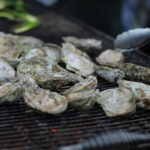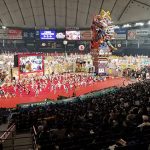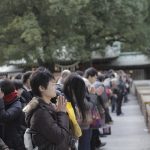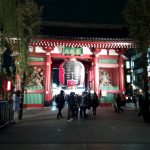
Setsubun: The Bean-Throwing Festival
Jan 27, 2022 By Justin Hanus
In the old Japanese calendar, spring arrived at the beginning of February. Setsubun, which means "seasonal division," commemorates the end of winter and the start of the weather turning mild....[ Click to read more ]

Setsubun Festivals in Nagoya 2022
Jan 25, 2022 By Ray Proper
Setsubun, or "That Bean-Throwing Festival," celebrates the beginning of spring in Japan. Celebrated yearly on February 3 as part of the Spring Festival, its association with the Lunar New Year...[ Click to read more ]

Spring Pickings – Strawberry Picking Around Tokyo
Jan 24, 2022 By Michael Stigall
Japan has a beautiful relationship with fruit. While it tends to be a little expensive (at least to the eyes of foreigners used to supermarkets crammed with the stuff for...[ Click to read more ]

Heroes on the Half Shell – Where to get in-season Oysters in Nagoya
Jan 24, 2022 By Bert Wishart
For those of us who are used to the climate control comforts of central heating, double glazing, and insulated buildings coming as standard, winter in Japan – where these are...[ Click to read more ]

Onsen – The How To’s, Do’s and Don’ts
Jan 12, 2022 By Bert Wishart
Seismic activity is so ingrained in Japanese life that folklore tells of Namazu, a giant catfish who lives beneath the country and is restrained by the god Kashima. However, when...[ Click to read more ]

Furusato Matsuri Tokyo 2022
Dec 25, 2021 By Jason Gatewood
Like food? Silly question, right, of course you like food! If you are looking for the opportunity to sample dishes from all over Japan but don’t have the time on...[ Click to read more ]

Hatsumode in Tokyo – Shrines to Visit for New Years
Dec 24, 2021 By Bert Wishart
In Japan, celebrating New Year is all about 'firsts.' Perhaps the most important 'first' is the first trip to a shrine, a tradition called hatsumode. While this visit can happen...[ Click to read more ]

Travel to a Relaxing Hot Spring Resort… Without the Travel!
Nov 14, 2021 By Jason Gatewood
It's no secret that Japan is one of the most seismically active places on Earth. But this is also a good thing when you consider one of the country's most...[ Click to read more ]

Ice Skating around Kanto (Winter 2021)
Jan 29, 2021 By Jason Gatewood
Even with coronavirus still weaving its microbial hooks into every facet of society, The heartbeat of the typical Japanese winter around Greater Tokyo barely skips a beat. As long as...[ Click to read more ]

Winter Attractions in Tokyo
Jan 26, 2021 By Jason Gatewood
Wintertime around these parts usually means either taking in some winter sports like skiing and snowboarding or soaking in one of the numerous hot spring onsens around the countryside surrounding the...[ Click to read more ]
